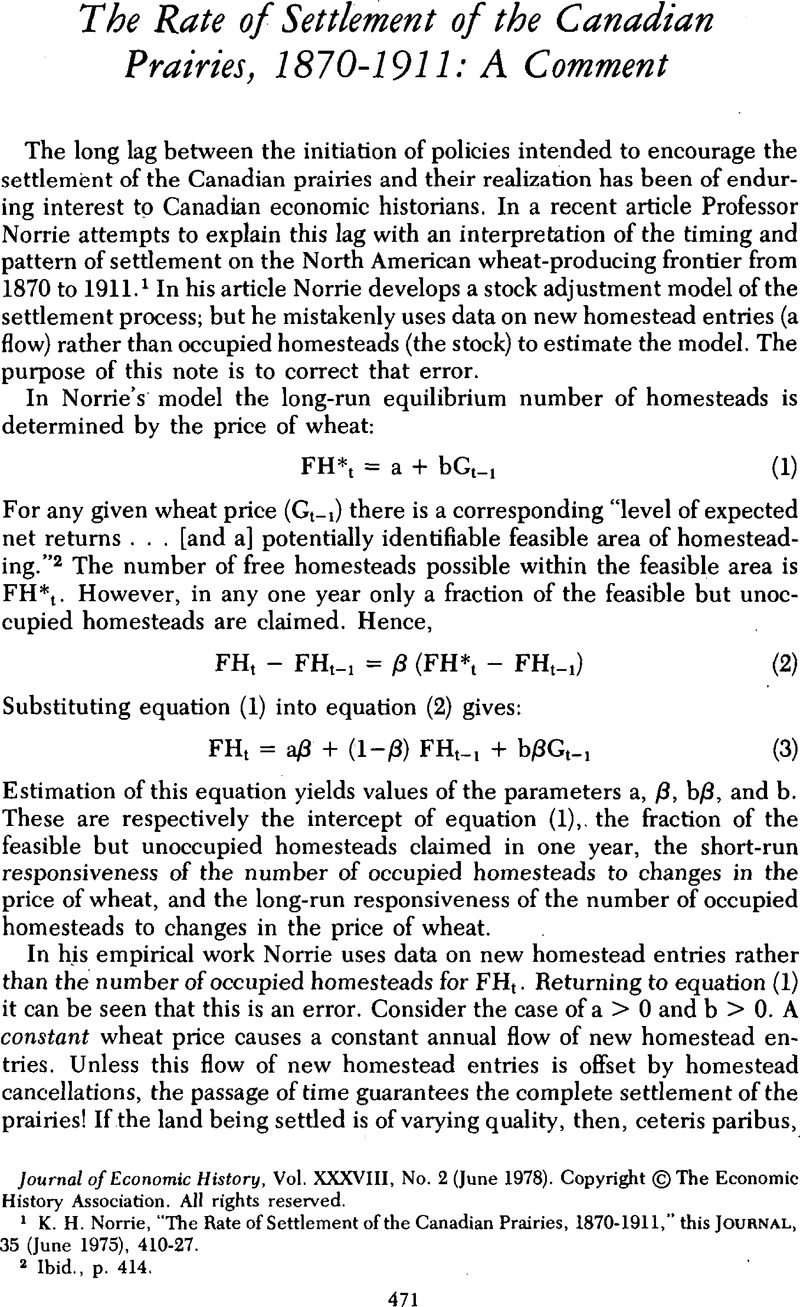Article contents
The Rate of Settlement of the Canadian Prairies, 1870–1911: A Comment
Published online by Cambridge University Press: 11 May 2010
Abstract

- Type
- Notes and Discussion
- Information
- Copyright
- Copyright © The Economic History Association 1978
References
1 Norrie, K. H., “The Rate of Settlement of the Canadian Prairies, 1870–1911,” this Journal, 35 (June 1975), 410–27Google Scholar.
2 Ibid., p. 414.
3 Urquhart, M. C. and Buckley, K. A. H., eds., Historical Statistics of Canada (Toronto, 1965), p. 320Google Scholar. No cancellations are reported prior to 1884; and, therefore, the estimate of the number of occupied homesteads has an upward bias.
4 The use of the stock data provides weak support for Norrie's conclusions concerning the effect of the completion of the Canadian Pacific Railway on the settlement process. In terms of Norrie's equation (3), only the coefficient for DGB is statistically significant at the 95 percent confidence level. Moreover, a slight drop in the confidence level would make the coefficient for DGA significant, which would imply that the settlement process was different in each of the three periods.
5 Norrie, p. 416.
6 This follows from the statistical insignificance of the coefficients for DFA and DFB in Norrie's equation (3) at the 95 percent confidence level.
- 3
- Cited by




